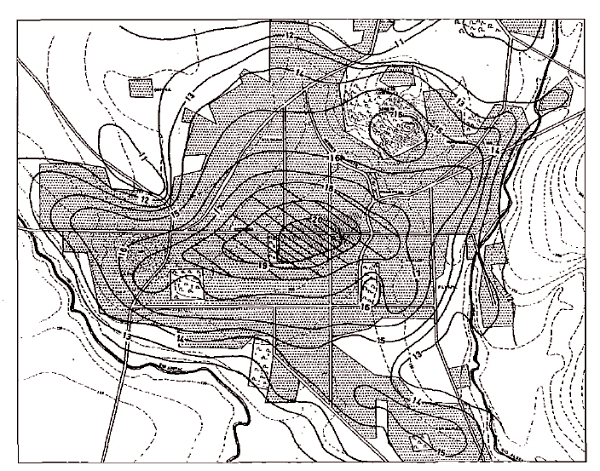As large urban areas grow in size, they change their local climate in various ways. The best known effect is that called the urban heat island: the air above cities is significantly warmer than the surrounding air in suburban and rural areas. The transfer of heat energy from people, homes, vehicles and factories warms the air immediately above the city. The irregular built-up surfaces of a city absorb more energy than nearby vegetated areas, also helping to raise the city’s temperature. The difference in temperature is most noticeable just before sunrise.
Wind speeds in cities tend to be lower than in their rural outskirts. Precipitation tends to be slightly higher, as a result of the additional heat energy, which causes mid-afternoon instability, and because city air has higher concentrations of particulates (dust, smog, contaminants) from vehicles and factories.
Mexican cities are no exception. The urban heat island differential has risen by an average of 0.44ºC per decade for large cities (population over one million), and by 0.37ºC per decade for mid-sized cities (population between 150,000 and 1,000,000). These rates are clearly greater than the background effect of global warming, variously estimated at between 0.07 and 0.20ºC a decade.
There is no doubt that accelerated urbanization has warmed and is continuing to warm urban air, affecting the comfort levels of millions of people. The cities where urban temperatures have risen most rapidly are Torreón, which warmed at a rate of 1.2ºC per decade from 1952–1998, and Guadalajara, where temperatures rose by 0.74ºC a decade from 1920–1997. [Jauregui, E. 2005. Impact of Increasing Urbanization on the Thermal Climate of Large Mexican Cities]
The case of Mexico City shows an additional complication. At the end of the 19th century, comparing minimum temperatures, Mexico City (population then 400,000) was about 1.5ºC warmer than surrounding areas. This difference had risen dramatically to about 9ºC (16ºF) by the 1980s. Urbanization has certainly played a part, and its effects have perhaps been exacerbated by the city’s unfortunate position in a basin, which traps air, heat and contamination. However, climate modeling suggests that the loss of lakes in the Valley of Mexico, including the draining of most of Lake Texcoco, has played at least as large a part in Mexico City’s increased temperatures as the expansion of its urban area. [Jazcilevich, A. et al. 2000. Simulated Urban Climate Response to Historical Land Use Modification in the Basin of Mexico. Climatic Change 44]
In addition, the incidence of intense rain showers (those where more than 20 mm (0.8 in) falls per hour) in Mexico City has also risen steadily, from four a decade in the 1940s to twenty a decade in 1980s. There is, however, no convincing evidence that wet season rainfall totals have increased, despite the combination of increased temperatures and instability, and the higher number of particulates in the air from dust, vehicle exhausts and factories. Away from the edge of the city, precipitation appears to have declined. [Jauregui, E. 2004. Impact of land-use changes on the climate of the Mexico City Region. Mexico City: Boletín del Instituto de Geografía.]
In summary, the expansion of Mexico City appears to have led to warmer, drier conditions in the Valley of Mexico.
Urban areas also have distinctive effects on hydrology. The roads and buildings of cities form impermeable surfaces which reduce infiltration almost to zero and greatly increase surface runoff. The lag time between a rainstorm and peak discharge in stream channels is much less in urban areas than in their rural surroundings. This makes the likelihood of flooding much greater in urban areas. In most cities, surface runoff is channeled rapidly into gutters and drains (a form of high speed throughflow) in an effort to reduce flood risk.
Related posts:

Sorry, the comment form is closed at this time.